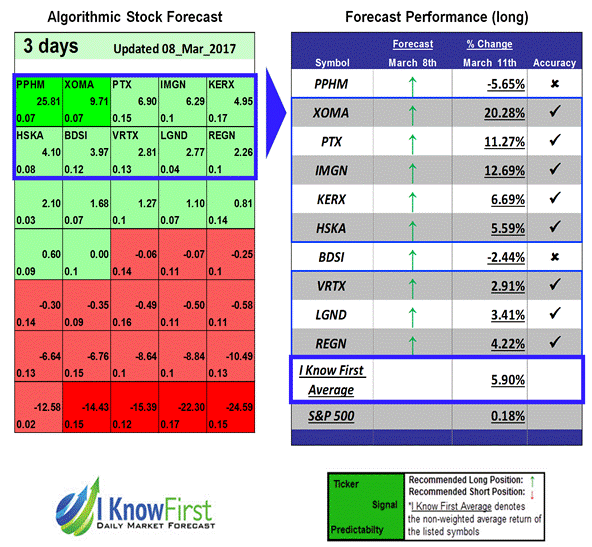Quick Win By The Algorithm: XOMA Rises 20.28%
Quick Win By The Algorithm
On March 8th, 2017, the I Know First Algorithm had predicted a bullish forecast for XOMA Corporation (XOMA). I Know First’s self-learning algorithm had predicted a bullish forecast on XOMA, with a signal strength of 9.71 and a predictability indicator of 0.07. In accordance with the algorithm, the firm had a reported a high short-term return of 20.28%, experiencing a quick win by the algorithm.
XOMA Corporation (XOMA) is a biotechnology company. They discover, develop, and commercialize antibody-based therapeutics in the United States, Europe, and the Asia Pacific. The Company’s innovative product candidates are the result of its expertise in developing ground-breaking monoclonal antibodies. Therefore, they have created new opportunities to potentially treat a wide range of endocrine diseases.
On February 13, XOMA Corporation agreed to sell 1,200,000 shares of its common stock and 5,003 shares of convertible preferred stock directly to Biotechnology Value Fund, L.P. Moreover, XOMA anticipates around $25.0 million proceeds from the offering.
BVF agreed to purchase the shares of common stock from the Company at an agreement price of $4.03 per share. The closing price of XOMA’s common stock on February 10, 2017, as reported on the NASDAQ Market.
In addition to the 25 million stock offering, XOMA Corporation announced that Jim Neal, Chief Executive Officer, will present the company’s new strategic initiatives and value drivers. This will take place at the Cowen and Company 37th Annual Health Care Conference in March. Also, a live audio webcast of the presentation will be available via XOMA’s website.
This bullish forecast on XOMA was sent to current I Know First subscribers on March 8, 2017.
Before making any trading decisions, consult the latest forecast as the algorithm constantly updates predictions daily. Although the algorithm can be used for intra-day trading, the predictability tends to become stronger with forecasts over longer time-horizons. Longer time-horizons such as the 1-month, 3-month and 1-year forecasts.














